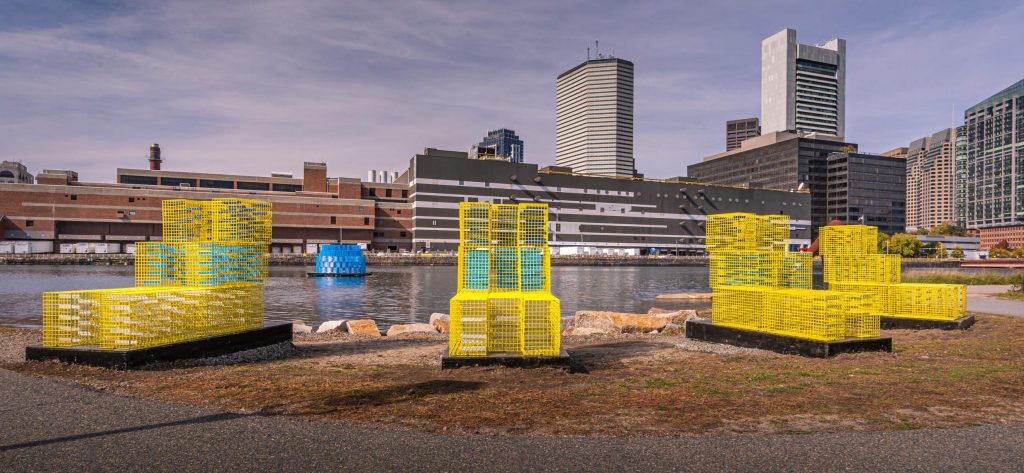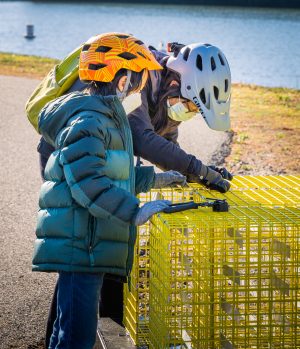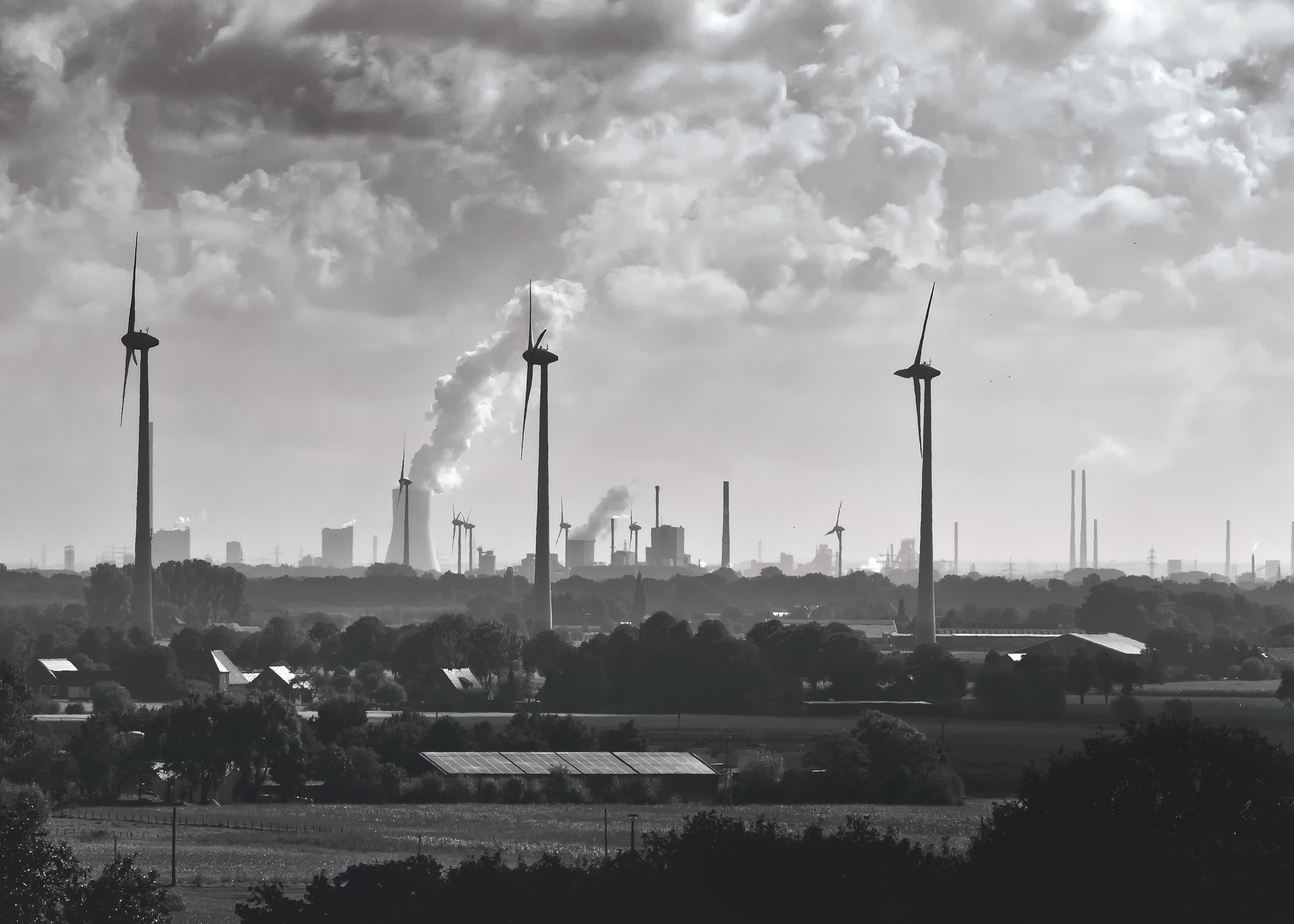Initiatives to communicate climate change are multiplying as never before, involving different platforms, tools, and approaches to engage the public. The open question that needs to be further explored is what role each of these forms of climate change communication has in triggering action and change at all levels of society.
Just as the CMCC is welcoming applications for the second edition of the Climate Change Communication Award “Rebecca Ballestra”, launched at COP27 last month, we reflect on how a scientific approach can also be applied to the most creative part of the climate issue, that of dissemination, to increase its impact. This is the approach taken by the authors of FutureSHORELINE, the winning project of the 2021 edition of the CMCC Award. A project that emerged from distinct yet overlapping approaches to climate change communication: the one of Carolina Aragon, a public artist, and Ezra Markowitz, environmental social scientist.

FutureSHORELINE is an integrated public art installation and social science research project that visualizes the place-based impacts of sea level rise due to climate change over the course of the 21st century. Specifically, FutureSHORELINE aimed to depict future flooding and its proposed adaptation strategies in Boston, Massachusetts, a city ranked eighth globally for the costs associated with flooding risk.
In this article, Carolina Aragon and Ezra Markowitz reflect on their experience creating and researching the impact of FutureSHORELINE. They ask: how can a public art installation like this one help the public better understand the local impacts of a global problem? How can art help us better understand and process complex information? And critically, how can artistic visualizations of climate change impacts and solutions allow the emotional implications of deeper understanding begin to settle incrementally in our personal and societal sense of being?
They discuss the process project from the artist and the researcher perspectives to provide readers with a more holistic understanding of the role that art and science must play if we are to effectively engage diverse audiences on the issue of climate change. They discuss the process and strategies for using an art installation as a tool for visualizing information at a local scale, as well as provide additional venues to aid our understanding through its physical, emotive, and narrative qualities. They discuss the social science research created around the project and reflect on the impact that digital exposure to the artwork, through imagery and videography, has on risk perception and support for local adaptation measures.
The artist’s perspective: Carolina

As an artist working on several art installations aimed at bringing understanding of the impacts of flooding due to sea level rise in Boston, I have developed personal relationships with scientists, non-profit, professional, and civic leaders working on local initiatives aimed at addressing climate change. These relationships allowed for informal conversations that eventually shaped, funded, and helped realize FutureSHORELINE: a floating and land art installation aimed to visualize the impact of flooding in one of the most vulnerable areas of the Boston shoreline.
FutureSHORELINE, a two-part sculpture
The sculpture’s original intent was to show “water over water”, to find ways to visually connect where the source of flooding will be, and do so while also illustrating its changing nature directly as the structure fluctuates with the daily tide. While in conversation with local officials working on community engagement around planning issues for the area, there was a desire for the sculpture to not only be about informing the public of the rising threat of flooding, but also present the information through an optimistic lens. Fortunately for this site, there was the promise of upcoming federal funding to support the implementation of a berm to protect the Fort Point neighbourhood. This information, along with the detailed descriptions of the flood vulnerabilities and potential adaptation strategies presented in the City’s Climate Ready Boston, South Boston report, provided the foundation for the artwork. While the report provided enough information to develop a concept for the artwork, the fine data related to the specific location and the projections for three different time frames — 2030, 2050, and 2070 — were provided by the UMass Boston Sustainable Solutions lab. FutureSHORELINE, in essence, became a data sculpture aimed at making climate information public and more accessible. It brought the information out of the placeless paper and screen of a report into a concrete public space in three-dimensional form for it to be seen and experienced as part of the fabric of the city.

FutureSHORELINE depicts flooding projections for 2030, 2050, and 2070. These are represented by three different tiers in the sculptures, which were built using locally manufactured lobster traps. The floating sculpture consists of a tiered cylinder of blue lobster traps filled with different coloured aluminium fins, designed to hang and flutter in the wind to create an optical illusion similar to the reflection of water. On land, yellow lobster traps create a semi-circle focusing the viewers towards the floating sculpture beyond. The sculptures were purposely designed to withstand climbing and sitting, in an effort to maximize public interaction, adding experiential avenues to connect with the information presented. The sculptures aim to translate information commonly seen in maps, and graphs, to vertical and volumetric dimensions which can be measured against one’s body. The sculptures bring a broader understanding of the impacts and can be experienced in a way that transcends the intellectual, connecting it to the personal kinesthetic and emotional experience attached to this particular location.
Beyond the Artwork: the images, movies and stories
Despite the sensory and emotive richness of accessing the information on-site, the reality of most artworks is that their audience remains physically detached — that is, a great majority of viewers may never physically experience the artwork, but rather access it through various digital forms of its documentation.
Ephemeral projects, like art installations, live primarily in people’s memories and through their media dissemination and online archiving. FutureSHORELINE was documented by two long-time collaborators: Matt Conti (photography) and Chris Rucinski (video), who bring their artistry to enhance how the images of the artwork convey their message about climate change. The video, in particular, made use of different vantage points, imagery, diagrams, music, and text to create a choreography in which the viewers become immersed in the project through an emotive gradual understanding of what is represented by the piece. The aerial vantage points provided by the drone imagery provide site context and a more holistic understanding of the land and water components of the structure. The views from the ground provide a relatable vantage point but are overlaid with graphics to maximize understanding of the information relayed by the sculpture. While limiting the open-ended possibility for interpretation that the artwork may have by itself, the photos and videos expand the experience of the project to those not in physical proximity, extend the life of the project, and can help with the understanding of the piece through their narrative qualities. For these reasons, it is important to understand the role of the experience of art beyond direct experience and consider how digital dissemination may also have an impact on viewers.
The social scientist’s perspective: Ezra

From the very first time Carolina approached me about working together on FutureSHORELINE it was clear to me that this would be a unique collaboration. Of course, I had to say “yes”! For me, the project embodied so many things that I look for in new research and public engagement efforts: strong potential for uncovering generalizable and impactful insights; innovative challenges in terms of project design, data collection, and analysis; opportunity to collaborate with people from different disciplinary backgrounds and perspectives; high levels of meaningful community engagement; and the possibility for continued, iterative exploration beyond the boundaries of the specific initial efforts.
From my perspective, working with Carolina and her team on FutureSHORELINE presented a unique opportunity to explore a new facet of a topic that I had become very familiar with over the course of my career: climate change communication with non-experts. In particular, I wanted to try and use a variety of social science research methods to figure out how exposure to and interaction with public climate art shapes the ways in which people think and feel about climate change. Why study people’s thoughts and feelings in response to the artwork? Because we know from much past literature that our beliefs, knowledge, attitudes, risk perceptions and feelings about climate change are all powerful drivers of our desire to confront the problem through real action, both individually and collectively.
Of course, we ran into roadblocks from the very start with this project, even before COVID added a whole extra set of challenges. The simple explanation for this is that it’s hard to measure transient experiences and the effects they have on people. Yet, that’s largely what it means to interact with a piece of public art like FutureSHORELINE. That’s why we initially designed a fairly complex, multi-faceted approach to assessing impact; we planned to use surveys, experiments and interviews to study whether and how the installation influenced people who interacted with it. But this meant involving lots of partners near the installation site, especially to do random-intercept surveys and on-the-street interviews with passersby. We just about had a plan in place to do that when COVID came along and completely upended things. All of a sudden, very few people were walking by the artwork on a regular basis, and it wasn’t feasible to stop them and ask survey questions (our institutional review board wouldn’t allow it!). Thus, we had to switch our entire assessment modality many months into the project, moving to a web-based approach that ended up allowing us to ask new questions that we hadn’t even previously considered when first developing the project together.
In the end, flexibility and responsiveness to changes in conditions “on the ground”, were key to fulfilling the original intent of both the scientific and artistic aspects of the project. By being willing to shift strategies in order to keep the project viable, we opened up a new opportunity for studying the impact of the online dissemination of the artwork. Through this research we have expanded our understanding of the effects that climate art can have on people’s engagement with climate change: everything from shifting their perceptions of risk to affecting their emotions, to building new appreciation of the challenges we face in a climate changed world.
In the planning, making, and studying of FutureSHORELINE, we have learned about the value of taking scientific information and translating it into public art sculptures which can be seen, understood, and enjoyed by the local public. Additionally, we have become better aware of how the documentation of the project (through photography and videos) can be an additional effective tool for engaging the public with issues of climate change. While the project is by far perfect, it presents some valuable tools which can be replicated and improved upon for continued growth in the fields of climate change art and communication.






